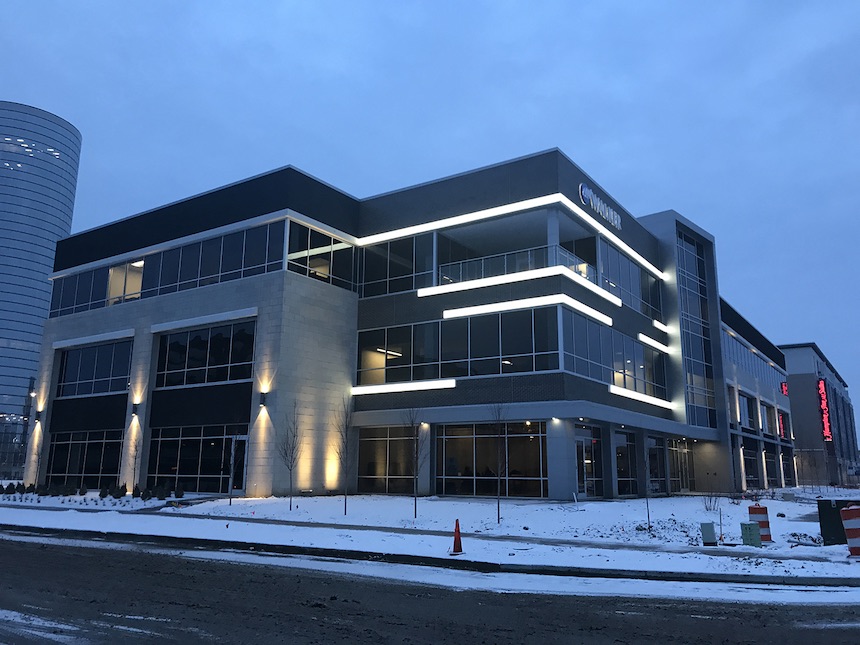When you think about signage, what comes to mind? The imagery? The wording? The font? How about the color?
Color psychology has been used for as long as advertising has been around— and likely before that, too! Determining the right color for your signage is essential to convey the message you want to put out there. It helps to attract your target audience, influence how people see your brand’s personality, and get them to feel the emotions you want to evoke in them. But how does it do that, and what colors signify what?
This article explores color psychology and how it’s used in signage design. For personalized advice, contact our team at Signworks today.
Show Me Your Colors
Color psychology is all about how colors affect how people feel and behave. It’s often unconscious, as the people you aim to influence generally don’t realize you’ve chosen those colors for a specific purpose. However, that doesn’t mean its effect is any less vibrant!
Let’s take a closer look at the colors used most often in signage and what these colors represent and aim to evoke.
1. Red
Red often creates a sense of urgency due to its high visibility and ability to stand out and grab people’s attention. This is why it’s often used in medical settings and on road signage such as yield signs.
However, urgency isn’t the only feeling red portrays! It’s also associated with energy and passion and may even increase excitement, which is why red is used in the food and beverage industries. It’s also frequently used to advertise retail sales and clearances. Beware, though: Too much red can render it redundant, making people’s eyes ‘tune out’, so it’s essential to balance it with another color.
2. Blue
Blue is calm, like the ocean on a cloudless day. It inspires feelings of peace, tranquility, trust, and security. As a result, it’s typically seen in corporate settings such as financial institutions, lawyers’ offices, and technology companies.
Using blue in your signage and branding may help people associate your business with trustworthiness and reliability. It also brings a sense of serenity to balance out the urgency of red, which is why these colors are often seen together in advertising.
3. Green
Due to its association with grass and trees, green is typically a popular color for environmentally conscious businesses and initiatives. Green is likely to be the predominant colour, whether it’s to do with recycling, natural products, or anything else eco-friendly. As green often signifies all things natural, it’s also a common color within the natural health and well-being space, like organic food markets.
Green also symbolizes creativity and growth outside the nature and health sphere, such as in technology start-ups and innovative businesses.
4. Yellow
Like red, yellow tends to make itself known and draw people’s eyes towards it. However, unlike red’s sense of urgency, it conveys happiness, optimism, and warmth. If you’ve ever wondered why emojis are often yellow by default, their origins as ‘smileys’ may be why!
As yellow evokes cheerfulness, it’s used by many businesses in their advertising. No matter the industry, whether it’s retail, food, or entertainment, it’s hard to go wrong with a dash of yellow.
5. Purple
Purple is the color of royalty. Signifying prestige and classiness, luxury brands often use it to convey their elegance and sophistication. As it’s not a primary color it tends to be less commonly used, meaning if you do use it, it will likely get people’s attention!
In addition to its luxuriousness, purple is also associated with creativity. If you want to inspire creative thinking and innovation, purple may be an excellent option for your signage.
6. Pink
If a certain 2023 movie starting with a B is anything to go by, it’s easy to see what pink is associated with! This color is a favorite among brands that market to girls and women of all ages, making it a popular color for retail stores selling clothing and makeup.
With that being said, it certainly isn’t restricted to ‘girls only’! As with all colors, pink has many hues from pale and pastel to bold and bright. Whether it’s your primary color or an accent, it’ll get people talking.
7. Orange
Orange signifies excitement and enthusiasm, making it popular in advertising. A combination of red and yellow (with some white in the mix), it’s opposite blue on the color wheel, which is why it’s often seen with blue on movie posters.
As well as enthusiasm, orange represents warmth, comfort, friendliness, and sociability. However, a little goes a long way! Overdoing the orange can be too much for the senses, so it’s best to use it in contrast with another color (such as blue).
8. Gold and Silver
As with medals, gold and silver are often seen as ‘winning’ colors and are used to reflect premium products and services. These colors work well with purple for this very reason! Gold and silver add a touch of luxury, making them popular choices for exclusive brands.
9. Black
Black is the color of sophistication and elegance. There’s a reason it’s called ‘black tie’, after all! This timeless color creates a sense of authority and makes a bold impression on its audience. Like with gold, silver, and purple, luxury brands and businesses often use it to portray an upscale image.
How to Incorporate Color Psychology Into Your Signage
When using color psychology for your signage, consider your brand’s values, target audience, and the emotions it wants to evoke. Use red for excitement and attention-grabbing, or green to convey health, harmony, and a sense of well-being.
Ensure you don’t overdo any one color— most businesses use two or three primary colours at the maximum. This helps to add visual interest. However, it’s crucial to ensure that the colors you choose complement each other visually and in terms of what they convey.
Lastly, consider where your signage will be and what it’ll be surrounded by. Make sure your signage doesn’t fade into the background— or clash with colors nearby, as this could overwhelm your audience and have the opposite effect!
By understanding color psychology and using it to your advantage, you can take your signage design to a new level.
Color Psychology Works— Try it Today
At Signworks, we’ve used color psychology for over 30 years and have helped numerous businesses make the most of it. Whether you’re considering signage design for your corporate office, college, or sports club, we’ve got you covered. To discuss your signage requirements, contact our experienced team today.

